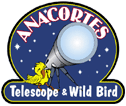Any suggestions on how to do this?
Using 2 meade ar6 refractors to make a binocular
Started by Startest, 02/23/2006 02:29PM
Posted 02/23/2006 02:29PM
Opening Post
Posted 03/03/2006 04:50AM
| Edited 03/03/2006 07:25PM
#3
Johann, I don't get the part about using a Celestron German Equatorial -- your neck will have to twist to match the angle of the binoscope unless it rotates...
I'm working on an alt-az mounted pair of Borg 100 Achro. My design is a variation of Matsumoto's EMS (see David's earlier response), from first principles (below). Two mirrors per side, right angle, correct image, true stereo. If I can't get that to work, I have a simple three-mirror-per-side design that is left-right reversed, but still true stereo not pseudo-stereo (in which convex objects look concave and vice versa). Certainly not for the faint of heart!
Imagine a large RACI (right angle correct image) prism diagonal, that works by having two orthogonal reflecting surfaces tilted back 45 degrees (there's an invisible centerline). Now use only half of the available clear aperture, say the right half, shifted left and centered over the optical axis. The final image will emerge, at a right angle, shifted to the left of the main tube axis. Do the reverse with the other tube. This way, RACI and decreased IPD are simultaneously achieved.
My implementation will use oversized elliptical mirrors instead of prisms. The underlying geometry is fascinating but not well published AFAIK. Probably originated in a military optics manual somewhere.
-- William Chang (Saratoga, CA)
I'm working on an alt-az mounted pair of Borg 100 Achro. My design is a variation of Matsumoto's EMS (see David's earlier response), from first principles (below). Two mirrors per side, right angle, correct image, true stereo. If I can't get that to work, I have a simple three-mirror-per-side design that is left-right reversed, but still true stereo not pseudo-stereo (in which convex objects look concave and vice versa). Certainly not for the faint of heart!
Imagine a large RACI (right angle correct image) prism diagonal, that works by having two orthogonal reflecting surfaces tilted back 45 degrees (there's an invisible centerline). Now use only half of the available clear aperture, say the right half, shifted left and centered over the optical axis. The final image will emerge, at a right angle, shifted to the left of the main tube axis. Do the reverse with the other tube. This way, RACI and decreased IPD are simultaneously achieved.
My implementation will use oversized elliptical mirrors instead of prisms. The underlying geometry is fascinating but not well published AFAIK. Probably originated in a military optics manual somewhere.
-- William Chang (Saratoga, CA)
Posted 04/04/2006 02:27PM
| Edited 04/04/2006 02:31PM
#5
I took these 2 photos a couple of years ago, at the WSP2004.
This gentleman had these (2) 6" refractors side by side, in a BINO configuration, and it worked rather well... (I seem to recall he had 2 sets of TV Dielectrics, 2 per scope)
I do not recall his name, but i'm posting the pics just to help out... 8)
Clear skies!
This gentleman had these (2) 6" refractors side by side, in a BINO configuration, and it worked rather well... (I seem to recall he had 2 sets of TV Dielectrics, 2 per scope)
I do not recall his name, but i'm posting the pics just to help out... 8)
Clear skies!
Attached Image:
Ivan Gastaldo 8)
Coconut Creek, FL
Ivan's Observatory
Lat 26N 16' 48" Long 80W 10' 48"
[COLOR="Red"]Personal Website:[/COLOR] http://www.ivangastaldo.com
CCD Imaging and Processing/Deep Sky - Moderator
I like to complain about everything - Moderator
Posted 04/04/2006 09:38PM
#6
Is there any way of adapting the design used by older microscope binoviewers (the ones that instead of simply rotating about a center column like a traditional binocular rather have an x versus y axis exchange for the interpupillary distance adjustment- i.e. as IPD gets narrower the ep's rise up on the last leg of the light path)?
Obviously there is a beam splitter inside, but if the prisms were rotated 180 wouldn't they be able to take the converging beams from the two telescope tubes?
Since these normally have very small eps most folks would probably not prefer these for astro use- but the design should still work, with the prism rotation as mentioned.
If this didn't muck up image rotations wouldn't it much simplify things?
Jess Tauber
Obviously there is a beam splitter inside, but if the prisms were rotated 180 wouldn't they be able to take the converging beams from the two telescope tubes?
Since these normally have very small eps most folks would probably not prefer these for astro use- but the design should still work, with the prism rotation as mentioned.
If this didn't muck up image rotations wouldn't it much simplify things?
Jess Tauber
Funding Member
Sponsors
- FocusKnobs
- APM-Telescopes
- Rouz Astro
- SellTelescopes.com
- astronomy-shoppe
- ASTROPHOTOGRAPHY BY MARTIN PUGH
- Anacortes Telescope
- Bob's Knobs
- OMI OPTICS USA LLC
- BBLABS LLC
- AstroMart LLC
- RemoteSkies.net
- BW
- Desert Sky Astro Products
- Astromart Customer Service
- Waite Research
- Matsumoto Company
View all sponsors


